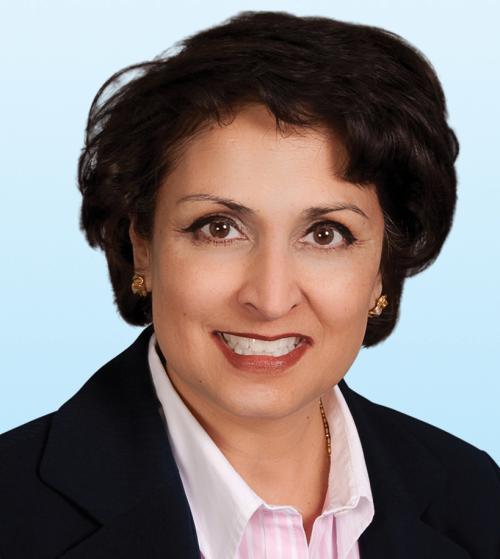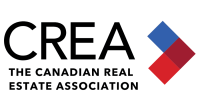
Southern Hospitality

One simple way to judge stability in commercial real estate is to look at the length of relationships. Office leases, for example, can extend years and decades into the future. Hotels, meanwhile, rely on relationships that are short term — guests can stay for a weekend or more, but the volume of turnover is an inherent aspect of the business. Appropriately, the instability related to COVID-19 was especially turbulent from the onset. But now more than two years into the pandemic, hospitality is recovering across all property types and markets.
Helen Zaver, senior vice president with Colliers International and a member of its National Hospitality Group, spoke with Commercial Investment Real Estate to detail expectations in the hospitality market. Based in Atlanta, she details how business and convention activity may continue to increase, which can mean different experiences for major urban markets versus secondary vacation destinations, such as Augusta, Ga., and Savannah, Ga.
CIRE: Colliers produced some recent research that shows the hospitality sector is continuing a steady recovery from COVID-19. How can CRE professionals gauge the health of the sector?
Helen Zaver: The pent-up demand has caused upward pressure on pricing for hotel rooms. We’ve seen markets that are in destination leisure locations have the largest upticks. The urban downtown markets have been a little slower to recover, especially in high-tech corporate locations. But overall, we’ve seen a positive trend, especially since 2020. We’re getting close to, if not already, surpassing 2019.
In Georgia, things are a bit skewed. The markets around Atlanta have been able to recover significantly and are probably surpassing 2019 numbers. Savannah has been a key market, given it’s a destination. It can be a bit of a tale of two locations — the areas that rely on convention center and group corporate business compared to leisure travel. That corporate activity has yet to come back in a big way.
I think that many of the travelers who were on the road prior to COVID-19 have returned. We’re seeing a lag, really, in group travel for corporate activities. I think that’s where we’ll see activity resume in the next year or two. Areas that may take longer or never come back are where IT companies that have said it’s fine to work from home — and that might be a permanent change that hospitality will have to work with.
CIRE: Atlanta is obviously a major market. You already mentioned Savannah, but Augusta is another small vacation market. What can those locations tell us about the hospitality sector in general?
Zaver: Savannah has had a higher occupancy in 2021 than pre-pandemic years. Tourism has been phenomenal. We’ve seen transactions that have been record highs. Augusta has had a similarly good return. The Masters, the golf tournament that takes place every April, accounts for about 25 or 30 percent of hotel business each year. The 2020 year, when the Masters was held later in the year without spectators, was an aberration. That market has come back in a big way already, just like Savannah.
Some of the performance has to do with these locations being within driving distance of a large population. We’ve seen strong demand for travel destinations that are easy drives for a lot of people. Meanwhile, hotels in major airport markets have struggled, especially those that cater to international travel, which has not yet returned. So, Savannah and Augusta are easy spots for millions of people in the Southeast and East Coast regions.
CIRE: In looking at primary markets like Atlanta, New York, and San Francisco, do you see any long-term contraction or expansion in overall inventory as we look to a post-COVID-19 period?
Zaver: Looking at inventory, the construction costs have increased by 25 to 30 percent, so that has reduced the supply of new properties in many markets. You’ll find projects that were supposed to start but never did. Part of that is due to costs, and part of it has been a pullback on the availability of financing. As we see demand return, I think the hotels that are in those markets will see significant growth in the next two years.
Different cities are seeing different recoveries. Many of the primary markets, New York and San Francisco in particular, took a very large hit at the start of COVID-19. Recovery to 2019 levels in those markets is not expected until 2026 or 2027. It really depends on location. The Southeast has seen some migration in recent years, so recoveries in those locations have been helped.
In examining New York in particular, one of the biggest factors is what we touched on earlier — the lack of international tourists and business travelers. These are two significant sources of business for New York, and they remain relatively low, even into 2022.
CIRE: In looking at different hotel asset classes, has one area performed better than others? Can you compare budget locations versus high-end properties?
Zaver: It’s been amazing — budget hotels have recovered much faster than any other sector. They seem to be doing quite well. But with luxury locations, it goes back to the same discussion of leisure destinations and those in downtown locations, which will take a little longer. Again, it has to do with convention and international travel.
CIRE: Considering the long-term impact of COVID-19, what have you seen in what consumers want from hospitality property operators?
Zaver: Considering the importance in public safety and sanitation, people often preferred locations that were within driving distance. They also looked to book with less advance notice. But one of the biggest changes that came with the pandemic was a willingness to embrace technology. Downloading an app to check in, using your phone as a room key, and ordering services through a hotel brand’s app — these are all ways to improve customer experience. Technology is at the forefront of the hotel industry’s ability to win more business and improve efficiency. In the wake of the pandemic, hotels have been quickly adopting technology that allowed them to operate during difficult times.
As for amenities and services, during the worst of COVID-19, many weren’t available. Gyms were closed, restaurants were limited, and breakfast options were limited. These things are coming back in a big way, but all with a consideration for extreme cleanliness. Properties must be intentional in their processes. Additionally, many hotels are experiencing challenges related to labor shortages that are causing concern. The demand is expected to come back, but businesses may have difficulty finding the necessary workforce. Speaking with hotel owners and operators, I’ve heard they face continued difficulty in finding people to fully staff properties and take care of guests.
CIRE: Disruption to the hospitality market won’t all be transitory — there will be permanent effects from COVID-19. Can you pinpoint a change or two that might be unexpected to CRE professionals?
Zaver: One of the changes I’ve noticed has been consumer travel patterns. Many people are taking shorter trips, booking in a shorter window, and combining work and leisure travel. Remote work, of course, is here to stay in a lot of different sectors, so that’s meant an adjustment to hotels to be able to have the right staff to take care of rooms and handle longer stays. People who may travel for work are asking, “Why don’t I just stay here for the weekend?” People used to travel Friday and Saturday, and then everyone left Sunday. Travelers are now more capable of checking in on a Thursday and staying into the next week. These changes in patterns are something I see as a permanent impact.
I also see an increased emphasis on efficiency. Whether it’s in check-in procedures or available services, those technology-driven improvements are here to stay.
Also, in the use of community areas, guests are looking for more offerings. Many people are becoming more comfortable ordering in and having dinner somewhere on the property. Guests who are working remotely will want public areas that are accommodating and spacious. These areas will need to be clean, comfortable, and inviting. An increased demand for these types of offerings and these spaces will be a continued trend in hospitality. These public areas are shared among guests, where they can have clean, cozy spaces where they feel comfortable getting together with friends or family. In addition to work areas in a property, these types of spaces will be in demand as people interact with hospitality assets in different ways due to COVID-19. I think that’s something that has changed for the foreseeable future.
Editor's note: This article is an adapted excerpt from a full-length Commercial Investment Real Estate
podcast.






